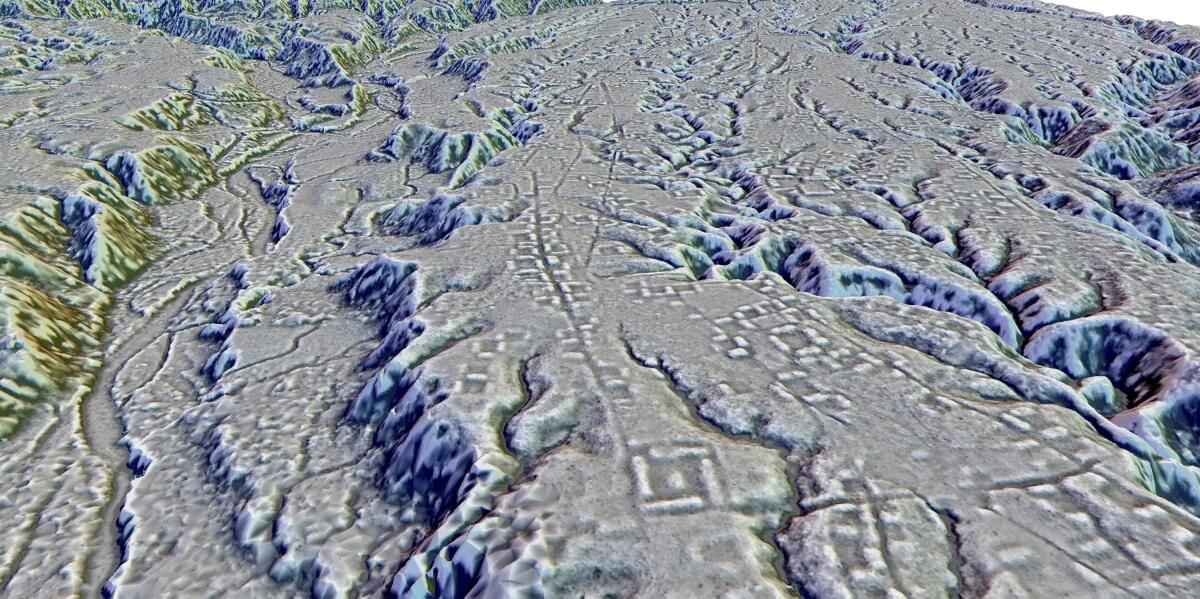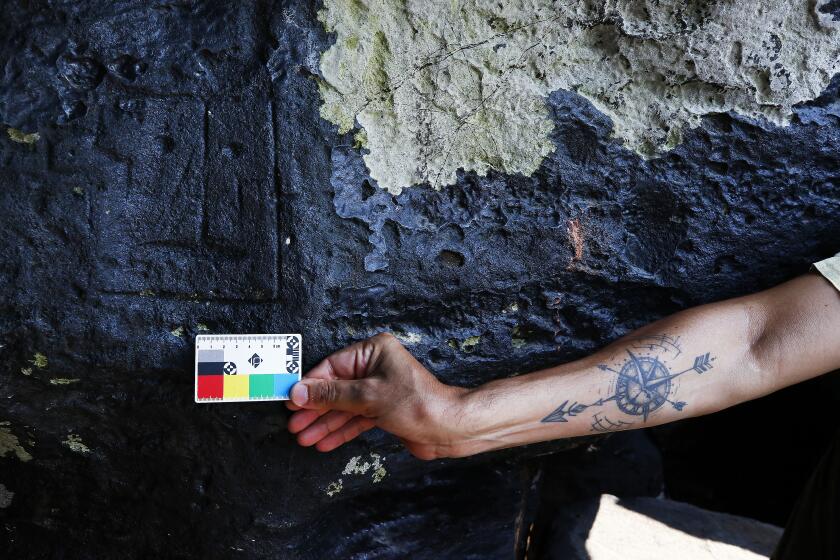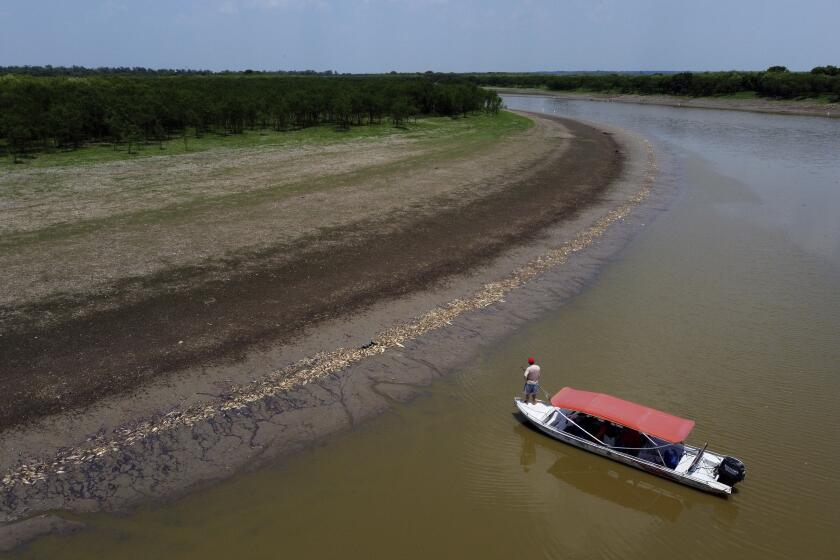Archaeologists map lost cities in the Amazon rainforest that lasted 1,000 years

- Share via
WASHINGTON — Archaeologists have uncovered a cluster of lost cities in the Amazon rainforest that were home to at least 10,000 farmers around 2,000 years ago.
A series of earthen mounds and buried roads in Ecuador was first noticed more than two decades ago by archaeologist Stéphen Rostain. But at the time, “I wasn’t sure how it all fit together,” said Rostain, one of the researchers who reported on the finding Thursday in the journal Science.
Recent mapping by laser-sensor technology revealed those sites to be part of a dense network of settlements and connecting roadways, tucked into the forested foothills of the Andes, that lasted about 1,000 years.
“It was a lost valley of cities,” said Rostain, who directs investigations at France’s National Center for Scientific Research. “It’s incredible.”
The settlements were occupied by the Upano people from around 500 BC to AD 300 to 600 — a period roughly contemporaneous with the Roman Empire in Europe, the researchers found.
Residential and ceremonial buildings erected on more than 6,000 earthen mounds were surrounded by agricultural fields with drainage canals. The largest roads were 33 feet wide and stretched for six to 12 miles.
The drought in the Brazilian Amazon has caused the Negro River to reach historic lows, revealing millennia-old carvings previously hidden under water.
While it’s difficult to estimate populations, the site was home to at least 10,000 inhabitants — and perhaps as many as 15,000 or 30,000 at its peak, said archaeologist Antoine Dorison, a study co-author at the same French institute. That’s comparable with the estimated population of Roman-era London, then Britain’s largest city.
“This shows a very dense occupation and an extremely complicated society,” said University of Florida archaeologist Michael Heckenberger, who was not involved in the study. “For the region, it’s really in a class of its own in terms of how early it is.”
José Iriarte, an archaeologist at the University of Exeter in southwest England, said it would have required an elaborate system of organized labor to build the roads and thousands of earthen mounds.
“The Incas and Mayans built with stone, but people in Amazonia didn’t usually have stone available to build — they built with mud. It’s still an immense amount of labor,” said Iriarte, who had no role in the research.
More than 100 dolphins have died in the Brazilian Amazon rainforest in the last week because of a severe drought and soaring water temperatures.
The Amazon is often thought of as a “pristine wilderness with only small groups of people. But recent discoveries have shown us how much more complex the past really is,” he said.
Scientists have recently also found evidence of intricate rainforest societies that predated European contact elsewhere in the Amazon, including in Bolivia and in Brazil.
“There’s always been an incredible diversity of people and settlements in the Amazon, not only one way to live,” said Rostain. “We’re just learning more about them.”
More to Read
Sign up for Essential California
The most important California stories and recommendations in your inbox every morning.
You may occasionally receive promotional content from the Los Angeles Times.












